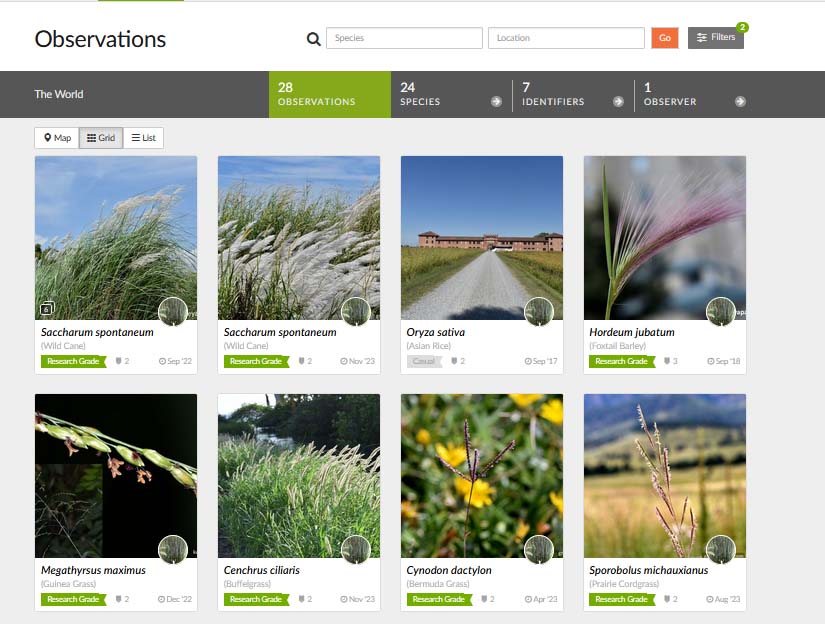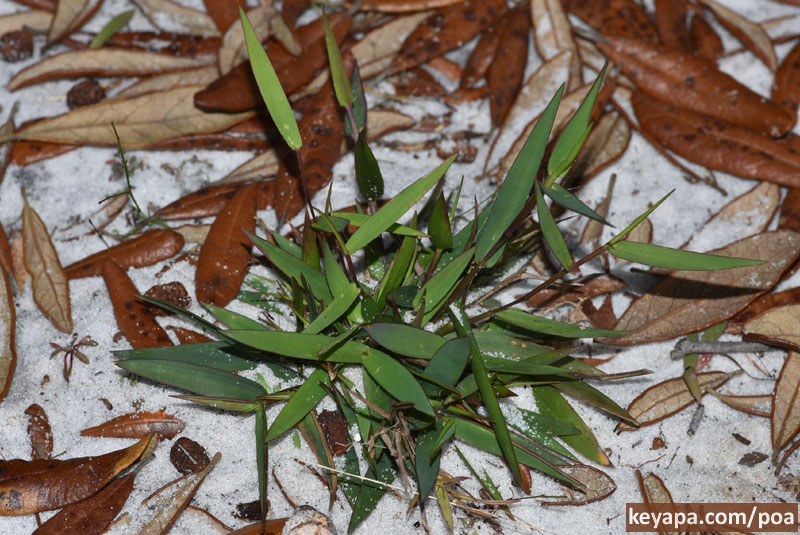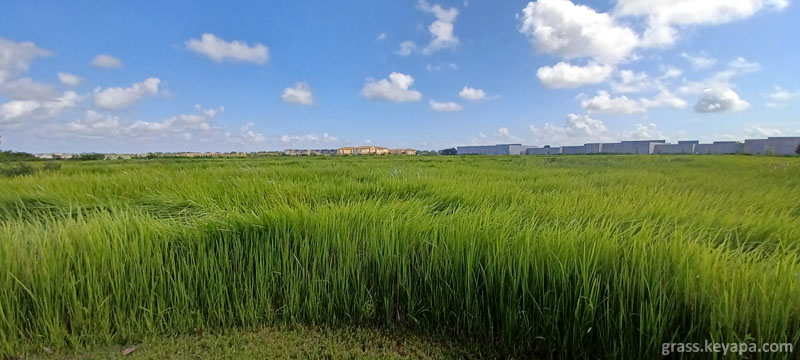
I finally decided to try out iNaturalist in earnest a week or so back, after I had created an account three years ago. If I remember correctly, I had used it before to see whether specific grasses were going to be present during one of our trips.
iNaturalist of course is a website (and phone app) that allows people to upload their observations of living organisms, and then have others from around the world help confirm their identities. It is very popular, with around 8.5 million registered users, and it has essential features that help in the identification of species and other taxa.
The first feature is a Computer Vision Model that scans an image and suggests a taxa as being “Visually Similar”, and the second feature is a geomodel that makes prediction on the absence or presence of a taxa in a particular location. In combination, these features help tremendously in narrowing down the identity of a taxon based on uploaded user images, even for people who may have never used a binomial or dichotomous key.

Posts of taxa to iNaturalist are classified as being:
1. Needs ID – for submissions that have less than two people agreeing on a taxa.
2. Research Grade – for submissions where two or more people agree on a taxa.
3. Casual – for submissions of captive or ornamental specimens.
In my case, I have been using iNaturalist for a variety of purposes:
1. To help ID older images that I had taken. For example, I was able to identify Dichanthelium portoricense by looking at Poaceae images posted by other users from the same specific location that I saw the specimen. I also used its Computer Vision Model to confirm the identification.
2. To determine what species to expect during future trips to a specific location and time. For example, I was able to see what flowering grass species would be present when I visit the isolated island of Svalbard in June.
3. To help identify taxa uploaded by other people, and thus improve my familiarity with the taxa. In this case, I decided to work mostly on Imperata cylindrica by confirming the ID of uploaders, as well as revising any mistaken identifications in the past.

The data generated by all these “citizen scientists” in iNaturalist is priceless, but there are some failings and negatives in the system as well.
1. The quality of images varies widely, from phone pics to DSLR macro images. I’ve been surprised by how many people can’t seem to focus on the relevant plant part. For example, the inflorescence in the foreground that they are aiming for is blurry, but the background is fine. Many people also submit only one picture, which again hinders correct identification.
2. Most identifications do not have any comment from the identifier as to their reasoning for the choice of taxa. Adding such info would be helpful not only to the poster of the image, but to future readers as well.
3. The reliance on many non-macro images to make identifications means that the quality of identifications varies tremendously from one taxon to another. Easy to identify and larger species are fine, but so far the images I’ve seen of smaller species such as ants are virtually useless. For example, I have extensive experience with the invasive Pheidole megacephala, but I was hard pressed to try to figure out whether pics of tiny ants from phones were actually of this species. The fact that some other people confirmed the identification anyways boggles my mind, and leads me to believe many IDs of smaller ants are unreliable.
4. iNaturalist uses so called “leaderboards” to show who are the top observers and identifiers. This adds a game-like element to the whole activity, and may encourage mis-identifications. Saying that, it can also help encourage participation, so it is a double-edged sword.
5. It is probably impossible to separate out taxa that rely on microscopic or minor structural features, so the platform is tilted heavily in favor of those taxa that rely on macro-features for their identification.
6. Anyone can make an identification, no matter the actual credentials of the identifier. Since an uploaded image probably tends to lose interest once it has been marked as “Research Grade”, mis-identified posts probably languish without being corrected.
7. I have found that many submissions that are actually captive or ornamental have NOT been marked as Casual, but have instead been marked as Research Grade.
In the end though, the benefits of this platform might outweigh the negatives. The ability to gather data from the natural world has been increased exponentially since its introduction, with even researchers using the website to scour specimen records in various geographical locations. In my case, I’ve only been heavily using it for two weeks or so, but I have learned quite a lot about a few target species after poring over their records and maps on the site. The platform also allows you to quickly find out people who share the same interests as you, and communicate with them easily.
So if you haven’t tried iNaturalist yet, by all means, feel free to try it out. You might just be surprised at what you learn.


Leave a Reply